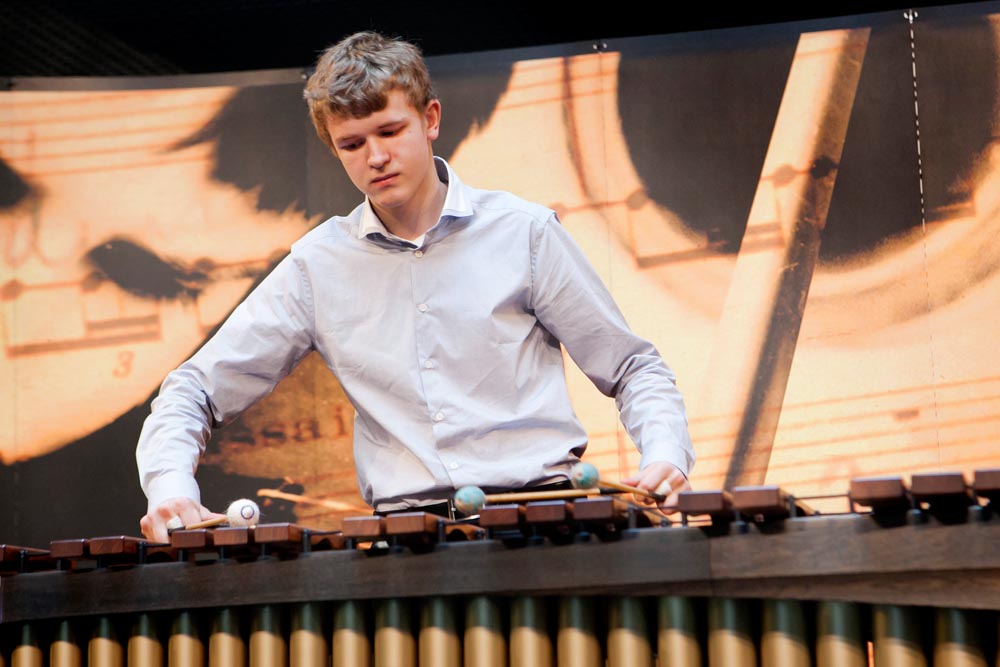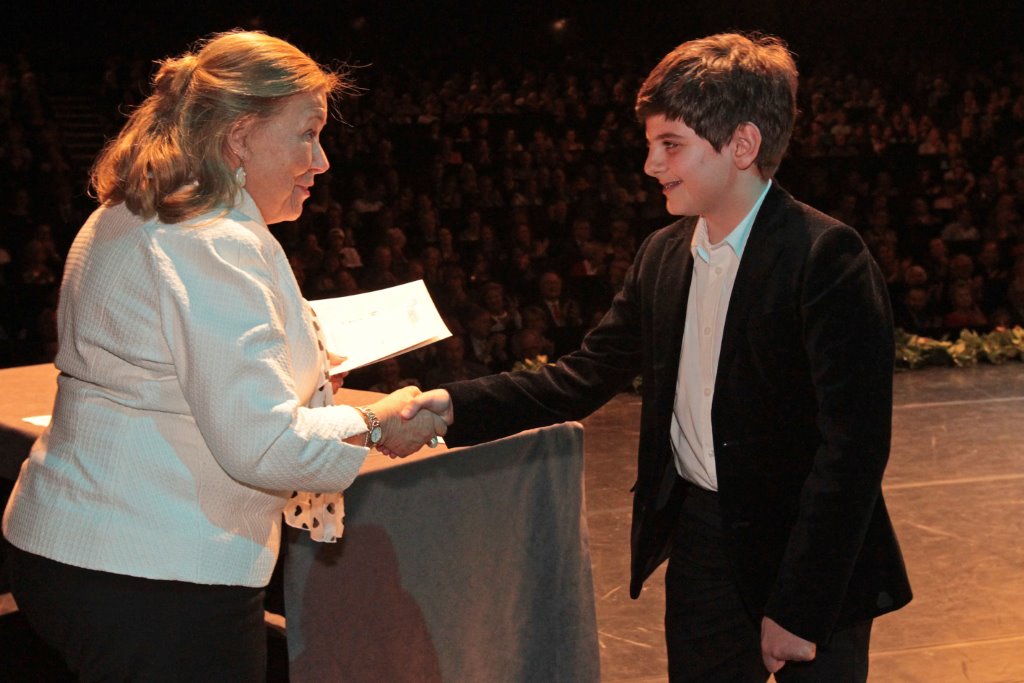On Sunday afternoon, 26 April, I was on the press jury at the final of the Princess Christina Competition at Lucent Danstheater in The Hague. Certainly not a punishment, because all six finalists played at top level, no matter how young and inexperienced they were. Time and again, the organisation proves that all the gloom about the future of classical music is nonsense: this year too, there were over four hundred entries. It sits with young people and classical music so it really is all right. The press award went to 16-year-old marimba player Martijn Boom.
Boom had by far the best stage presence: he gave the impression that this was by no means his first performance in front of a large hall full of audience. Dressed in a black blouse and ditto trousers, he walked leisurely onto the stage, received the applause and then, in great concentration, gave a flawless, highly expressive performance of Variations on Japanese Children Songs by Keiko Abe. Sometimes he stroked the keys with his sticks in dreamy Debussy-like strings of notes, other times he pulled out fortissimo in menacingly dissonant harmonies.

Boom is a true storyteller. He holds the tension from A to Z, does not shy away from drama and is one with his instrument. Every movement is motivated by the music, moving with the grace of a ballet dancer. In this way, he made empathic how Japanese mothers not only tell their offspring reassuring bedtime stories, but also warn them about evil dragons. Boom also immediately presented the only piece by a composer who is still alive - a woman, moreover. The professional jury gave him only second prize, but we are going to hear a lot more from this boy.
The other young musicians also performed at an improbably high level - even though none of them are professionally trained. Twelve-year-old alto saxophonist Benjamin Farber played lively bravura pieces by Gottlieb and Plekhanov with abandon. Although he briefly lost the thread in the second piece, he kept us on our toes with his beautifully warm tone and smooth rendering of the breakneck fast rhythms in Plekhanov's piece. Incredibly, he has only been taking lessons for a year and a half. The expert jury rightly rewarded him with first prize.
This was also given to 13-year-old pianist Andrei Makarov. Sovereignly he played a movement from a Mozart sonata, after which he brought two preludes by Shostakovich to life with great empathy. His playing itself is communicative, but by stubbornly staring at his piano at the end of a piece, he deprives the audience of the chance to express their appreciation in applause. A mortal sin for any performer, there is a world to be won for Makarov there.

The same goes for the duo Mayu and Takehiro Konoe, also awarded first prize. It is abundantly clear that the twins have been playing together since childhood: they breathe as one body and their performance of the Passacaglia of Handel was splashy, even in the lightning-fast pizzicati passages. However, communication with the audience was lacking and their presentation was somewhat wooden, only loosening up towards the end. Moreover, beanpole Takehiro needs walking lessons: he trudges up and down the stage as if he would rather be somewhere else.
Second prizes went to harpist Michelle Sweegers (17 years old) and pianist Johannes Asfaw (14 years old). Sweegers had the dubious pleasure of leading the way. After a somewhat timid Pierné, she tackled the strings with more fire in a robust piece by French harpist/composer Carlos Salzedo. The pianist Johannes Asfaw impressed with the virtuoso Scherzo No 2 opus 31 by Chopin. He had clearly thought about his presentation, sometimes dramatically floating his arm above the keys for a moment. Perhaps thanks to this show element, he was awarded the audience prize.
The afternoon was smoothly chatted up by former winner Cathelijne Noorland, with brief introductions to the works performed and the musicians. As always, Princess Christina presented the prizes. Omroep Max made recordings, which will be broadcast on Wednesday 29 April in the Evening Concert on Radio 4.
